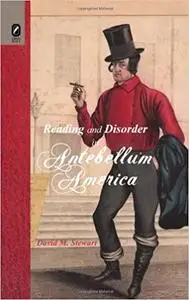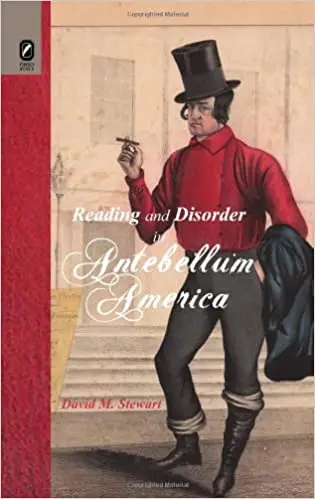David M Stewart, "Reading and Disorder in Antebellum America"
English | ISBN: 0814211585 | 2011 | 264 pages | PDF | 51 MB
English | ISBN: 0814211585 | 2011 | 264 pages | PDF | 51 MB
Historians of workingmen in the antebellum United States have long been preoccupied with labor politics and with the racism, nativism, and misogyny of their public culture. Reading and Disorder in Antebellum America expands our account of such men by asking questions about their social and bodily lives that are more discrete, yet still engaged with the economic forces that radically altered working life as the market revolution transformed a rural, agricultural nation into one that was commercial, industrial, and urban.
To advance a more capacious view of workingmen, David M. Stewart turns to reading, which is where many first encountered antebellum change as a material fact. Tapping sources from serial fiction, reform tracts, and children's books, to diet, land use policy, and personal correspondence, Stewart contends that in helping retool a workforce of farmers and artisans to meet the disciplinary needs of capital, the period's burgeoning new print culture industry developed rhetoric that used emotional coercion to affect conduct. This rhetoric also became the basis for recreational idioms that compensated for the pain of both coercive reading itself and the world such reading produced. In the space between the disciplinary and recreational lives of workingmen, Reading and Disorder revises how we understand them as performative subjects, which is to say, as cause and effect of changing antebellum times.
Reading and Disorder in Antebellum America is an ambitious and sophisticated work. David M. Stewart provides a detailed, insightful rendering of texts that often occupied a border between sensational fiction and middle-class reform literature. Given its range of topics, and the skill with which they are unpacked, this book has wide ramifications for our understanding of the antebellum period. –Christopher Wilson, Boston College
David M. Stewart's book offers a fascinating look at the way working-class men engaged with and indeed were transformed by their reading of mass culture sensationalism in the antebellum period. His is a uniquely insightful and subtle work on a field of growing interest to scholars in literary and American studies, popular culture, gender studies, and the emerging field of emotion studies. –David Anthony, Southern Illinois University



